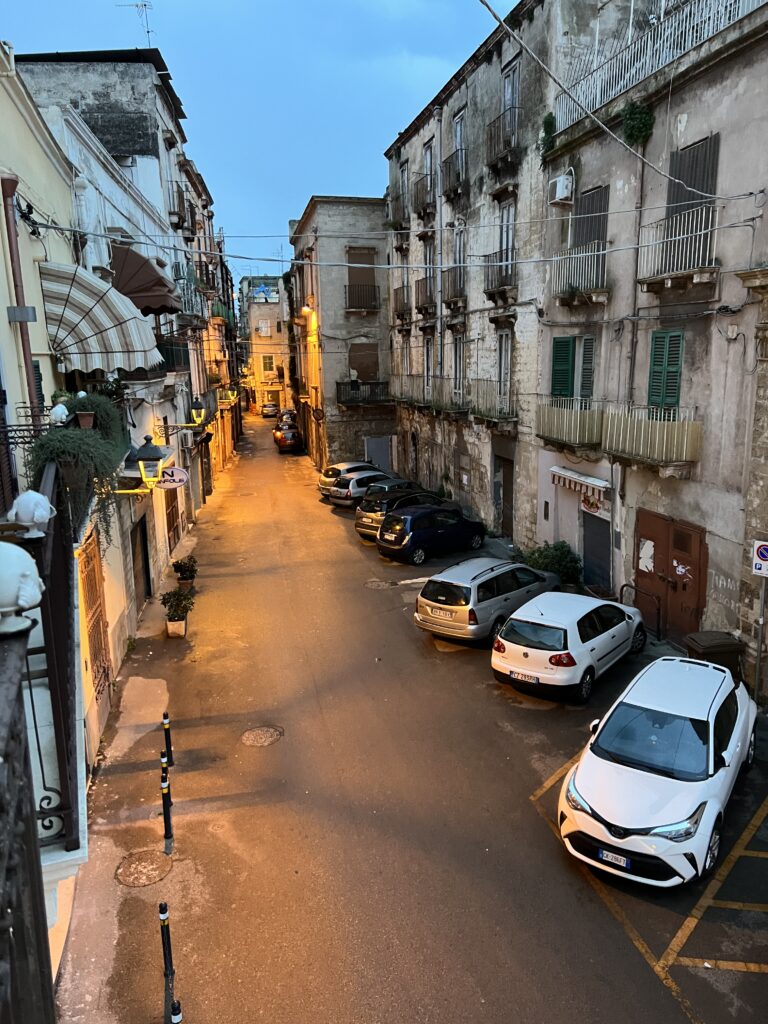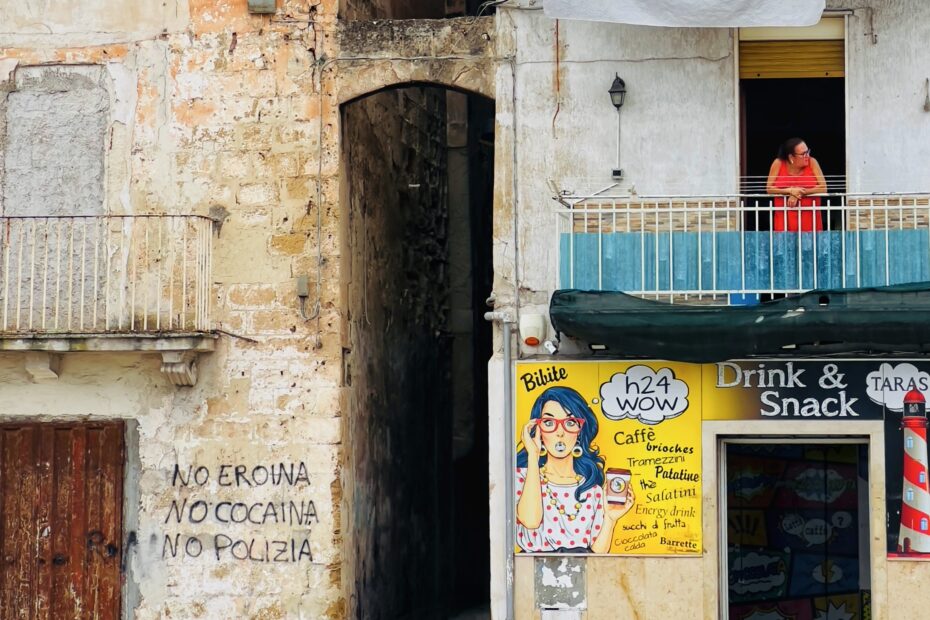Taranto could have been one of the most beautiful cities in Southern Italy, a serious competitor to Naples and Palermo, but was condemned to a long decay. The ILVA steelworks controversy is one of the worst national scandals we ever had, and still without an end in sight. But a visit to Taranto’s historic centre would be a remarkable tribute to a much neglected city.
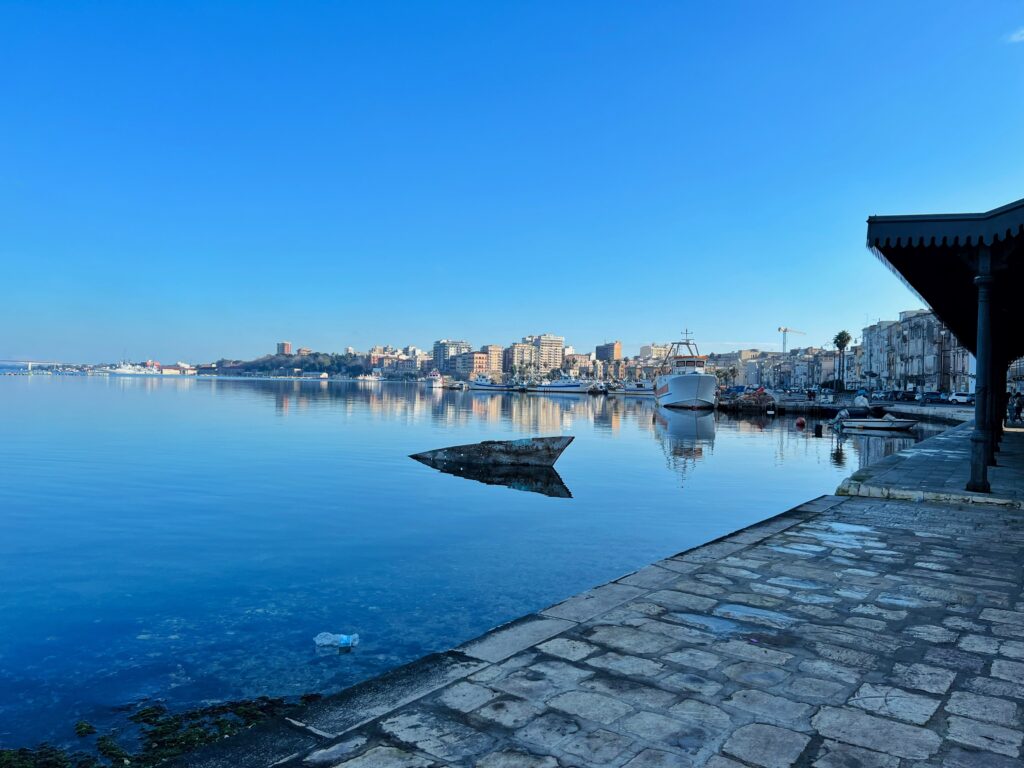
Taranto’s borgo antico, the historic old town is located on a small island between the Mar Grande, a bay in the Gulf of Taranto, and the Mar Piccolo, famous for its mussel cultivation. It is connected to the mainland by a road bridge on each of its northern and southern ends.
The piers of Taranto’s porto vecchio are lined with fishing boats. Sitting behind is la Città Vecchia, Taranto’s historic centre. A maze of small shops and restaurants, where whole houses can be bought for 1€. Raw and gritty, yet breathtakingly authentic.
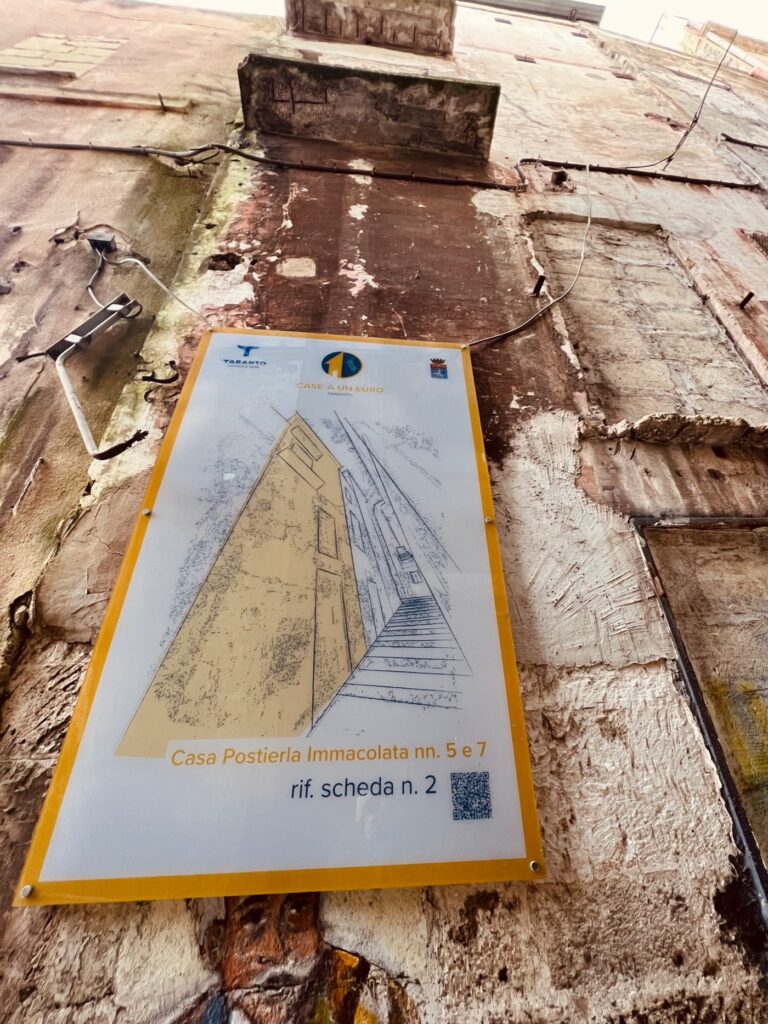
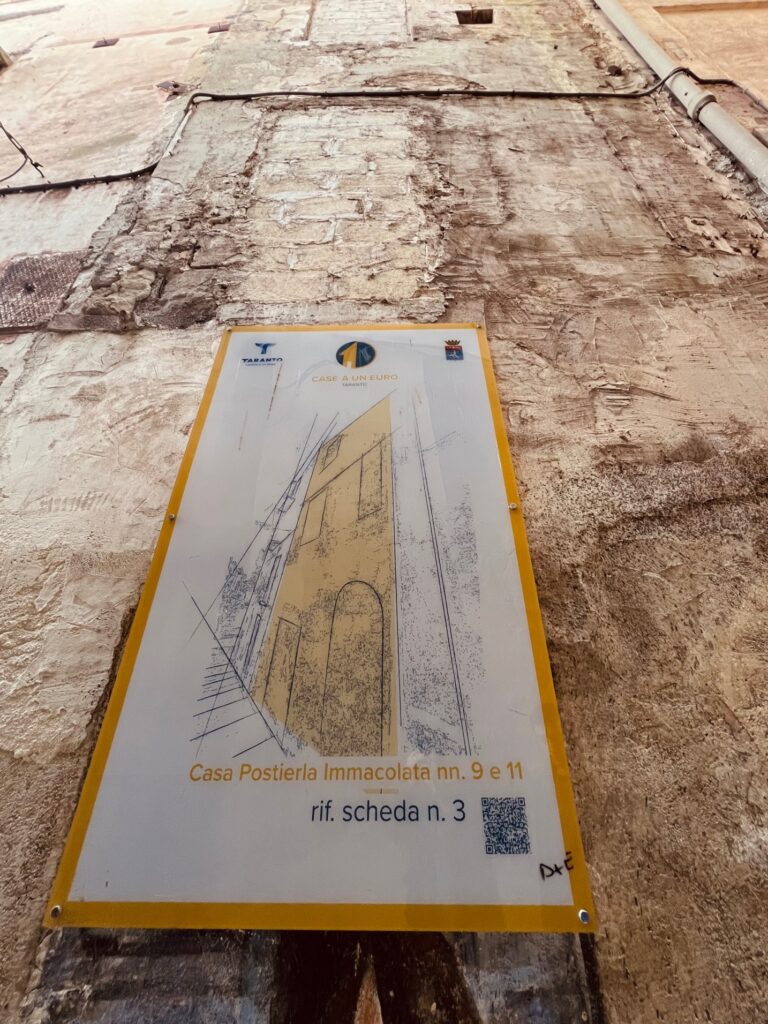
Few tourists visit the city of Taranto. The fume-belching chimneys of the neighbouring steel processing plant, a testament to Taranto’s troubled recent history, continue to cast their shadow. But for those who do the experience is unique, as if stepping back in time.
Spartan Taranto
The earliest settlements in the area were established by the Mycenaeans, a civilization that flourished in Greece from the 15th to the 12th century BCE.
The Spartans first came to Taranto in the 8th century BCE when they established Sparta’s only colony on the island of Taras (present-day Taranto). Over time, Sparta Taras became a thriving and influential city, known for its wealth and cultural achievements. The Spartans who lived there became known as the “Tarasii,” and were highly respected for their military skills and devotion to their city.
Numerous artifacts and monuments that tell the story of Taranto’s Greek past remain, including a row of Greek columns standing near the water.
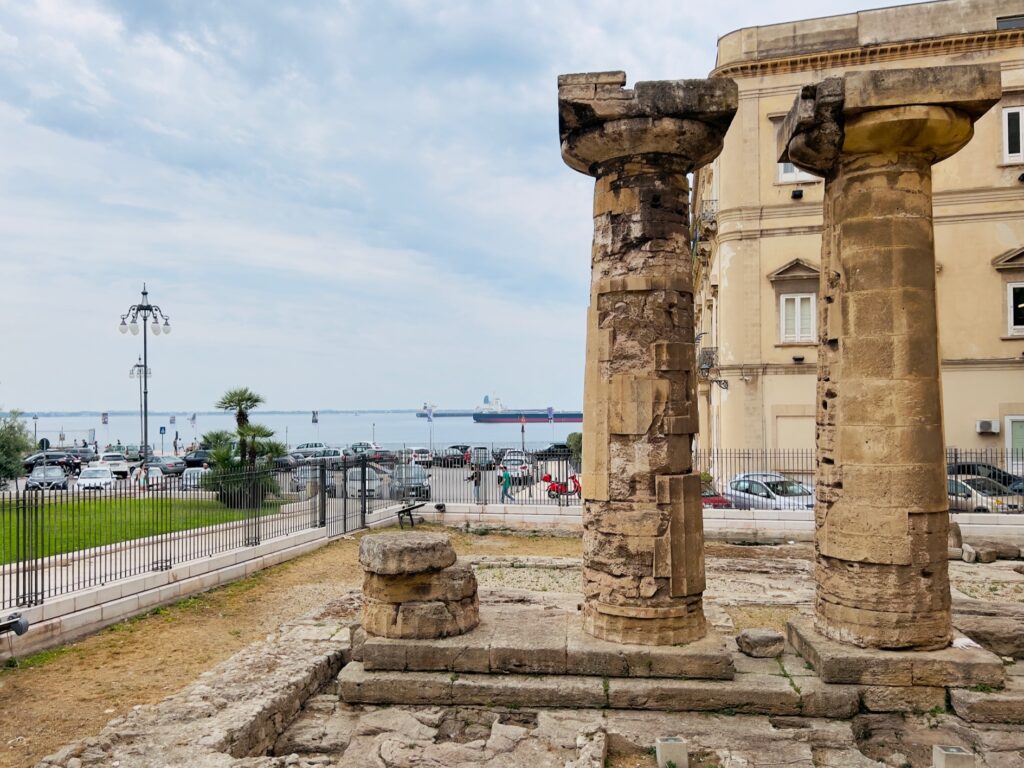
All roads lead to Rome
Despite its success, Sparta Taras eventually came into conflict with the Roman Republic. In 272 BCE, the Romans conquered the city and made it a part of their empire. Under Roman rule Tarentum became an important port for the Roman Empire, connected to Rome by the Via Appia.
The Via Appia, also known as the Appian Way, was a Roman “superhighway” built in the 3rd century BCE that stretched from Rome to the southern part of Italy. It was one of the most important roads in the Roman Empire, serving as a major artery for trade, military communications, and other forms of travel.
The section of the Appian Way in Taranto was built in the 2nd century BCE and was used for hundreds of years until the decline of the Roman Empire. Notable for its well-preserved state, many of the original features of the road are still visible today.
From Ancient age to Late Modernity
During the Middle Ages, Taranto was ruled by a series of different powers, including the Byzantines, the Lombards, and the Normans.
In the 14th century, Taranto became part of the Kingdom of Naples, and it was during this time that the city experienced a period of prosperity and cultural growth. The Renaissance and Baroque periods also saw significant cultural and artistic development in Taranto, with the construction of numerous churches (witness the old town’s main cathedral dripping in marble), palaces, and other important civic buildings.
In the 19th and 20th centuries, Taranto underwent rapid industrialization, becoming an important centre for the production of steel and other metals. And from its glorious past, Taranto was condemned to a long decay.
Horrible History
Beyond the island that holds Taranto’s old town, the Via Appia runs alongside the steelworks that blight Taranto’s landscape and reputation.
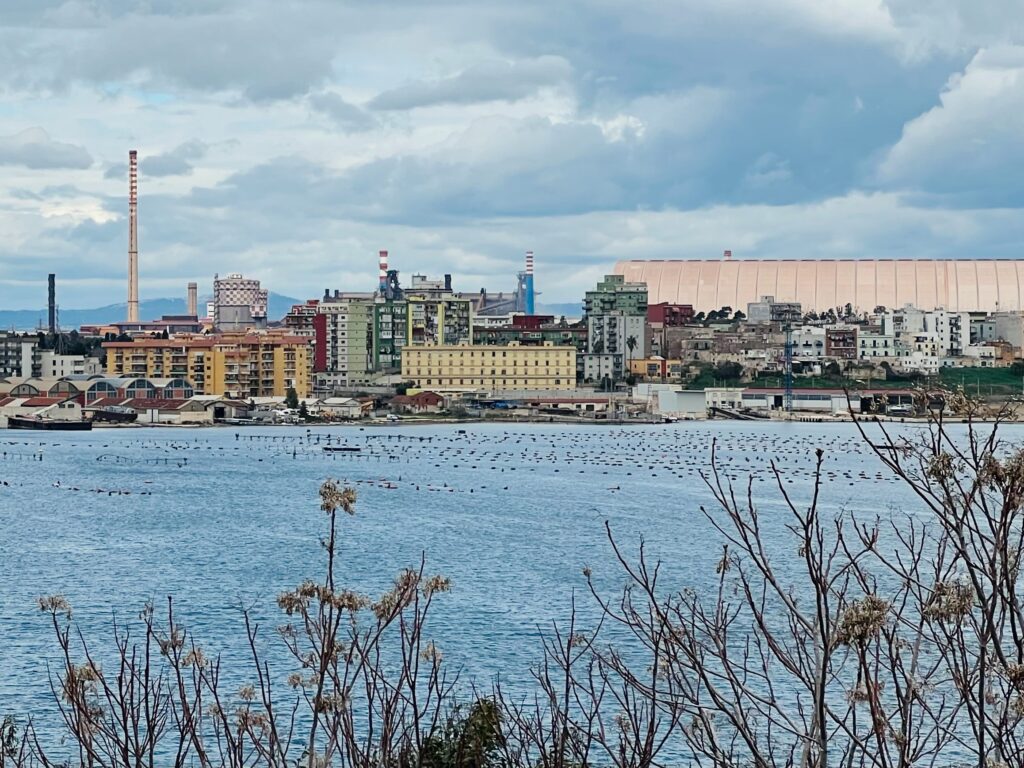
The ILVA steelworks is a large industrial complex, one of the largest steel production facilities in Europe. It was founded in the 1960s and has undergone several expansions over the years. The complex includes a number of facilities for producing iron and steel, including coke ovens, blast furnaces, steelmaking furnaces, and rolling mills.
The steelworks has a long history of environmental controversies. It has faced legal challenges related to the emission of pollutants and the management of hazardous waste and became the subject of a national scandal involving allegations of environmental crimes, corruption, and mismanagement.
The scandal began in 2012, when the Italian government seized control of the company and placed it under special administration due to concerns about the environmental impact of its operations. Subsequent investigations have revealed that the company allegedly engaged in illegal dumping of toxic waste and released high levels of pollutants into the air and water, leading to serious health problems for local residents. There have also been allegations of corruption within the company, including the use of false invoices to avoid paying taxes.
The ILVA scandal has received widespread media attention in Italy and has had significant political and economic consequences. The company has faced numerous legal challenges and has been the subject of ongoing efforts to clean up its operations and address the environmental damage it has caused.
But its legacy reaches further. Studies have suggested that high cancer rates, especially among children, and other health problems are attributed to air pollution from the ILVA steelworks.
The beauty underneath
Taranto’s landscape is still dominated by the smokestacks that push up from the industrial expanse, billowing black fumes and white plumes of condensed steam, and by huge hangar-like buildings that house the ash and steel particles.
Yet – and yet – we are drawn to the beauty underneath. We did not see it at first. Not even on our second and third visits.
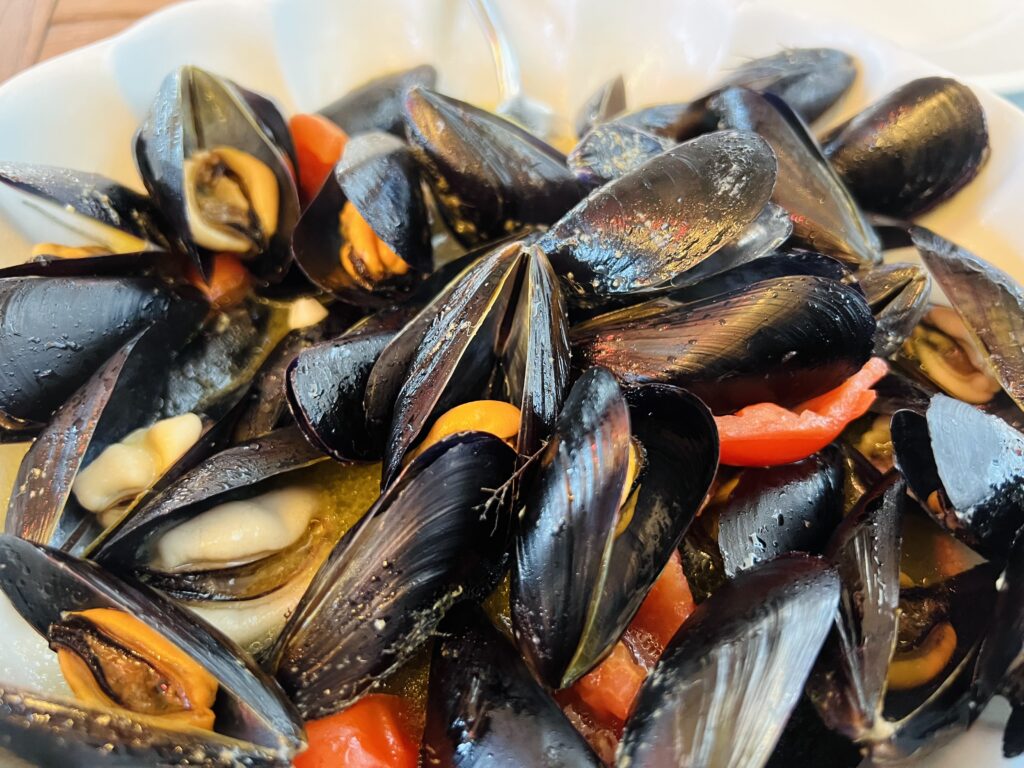
Our love affair with Taranto’s old town started with cozze: mussels. La cozza tarantina is unlike any other we have tasted. Tarantina mussels benefit from the unique conditions of the bay in which they are cultivated. Oxygen rich underwater springs flush into an inner basin which already has a higher salinity. This favours and flavours the plankton, plumping up the mussels with their distinctive taste.
Having tasted them cooked in a variety of dishes, but also raw and steamed in a simple broth, they have become a taste obsession. To the extent that we will only order mussels on the menu if they come from Taranto.
Then there’s the old town itself. Much of it dilapidated. Raw, gritty and authentic. Scattered on its edges, a few fine restaurants with exceptional seafood and fish. Fresh and local. So local, you can probably follow the trail of water drips to the boardwalks along the quayside where it was bought from the fishermen who landed it.
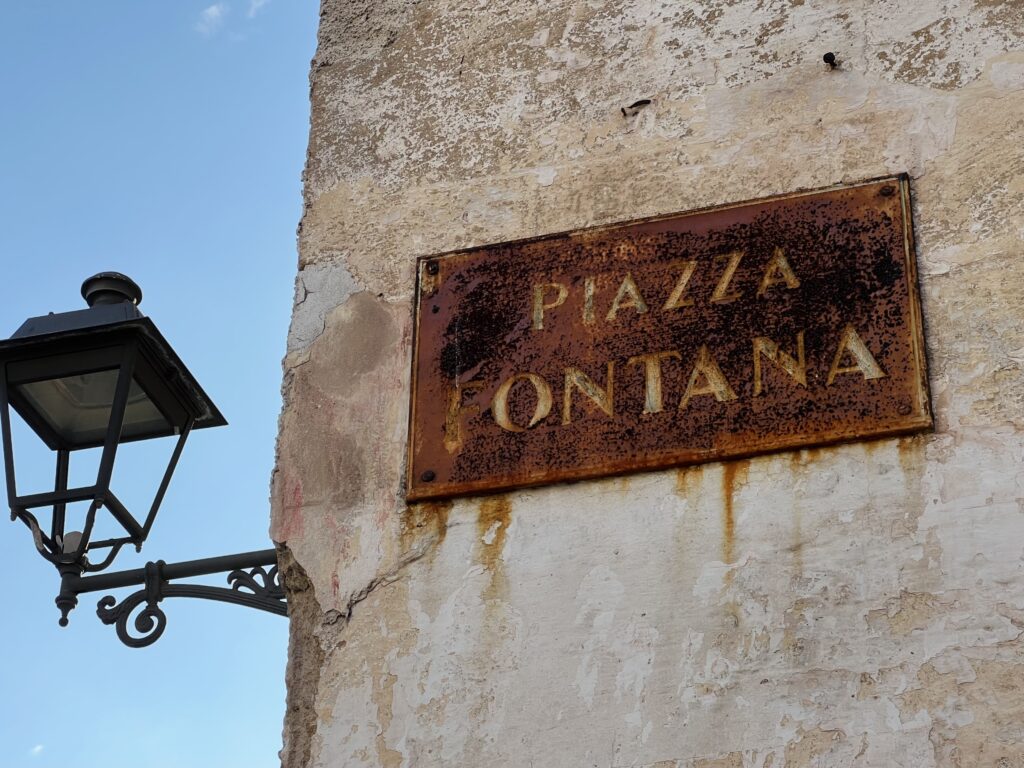
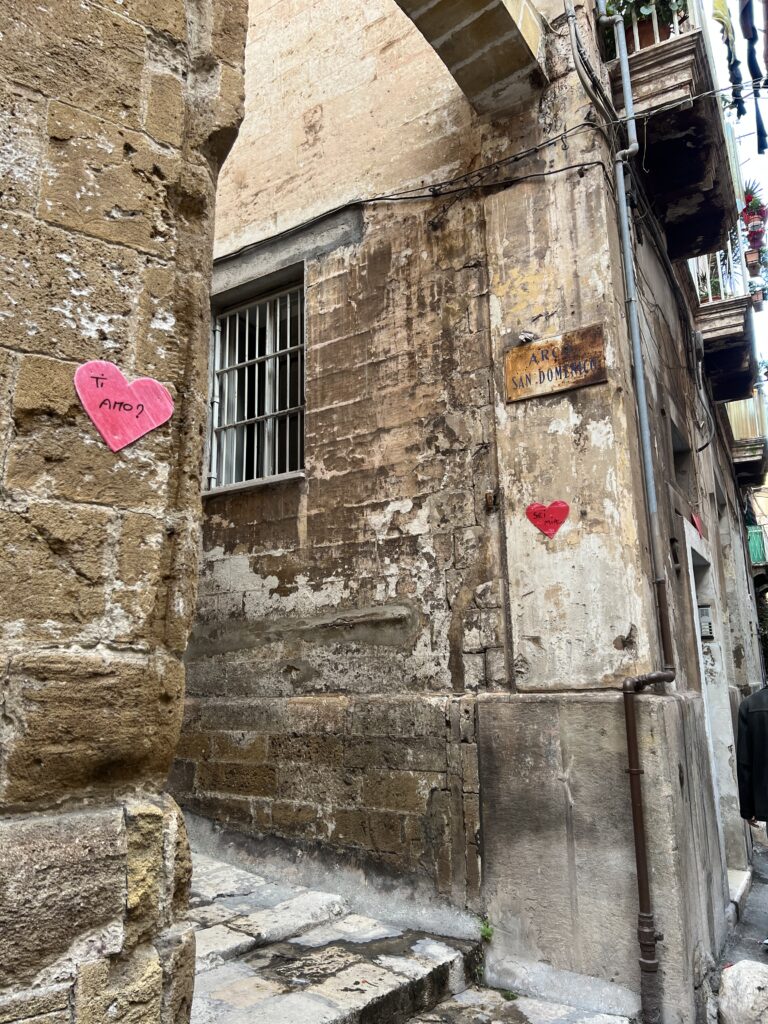
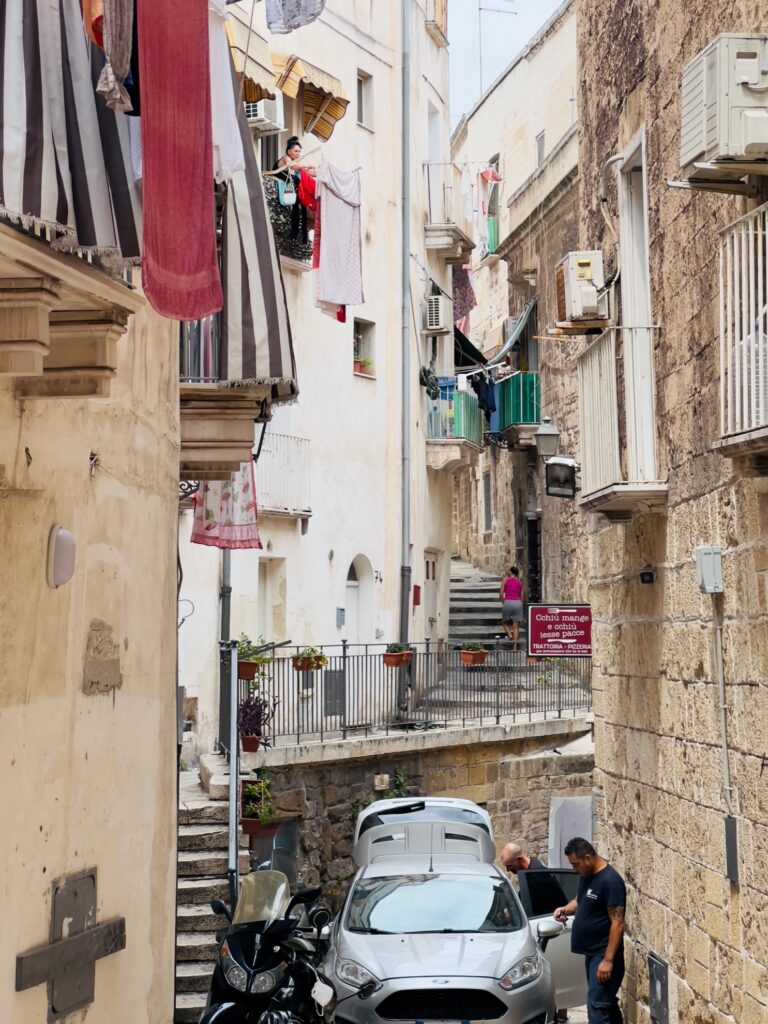
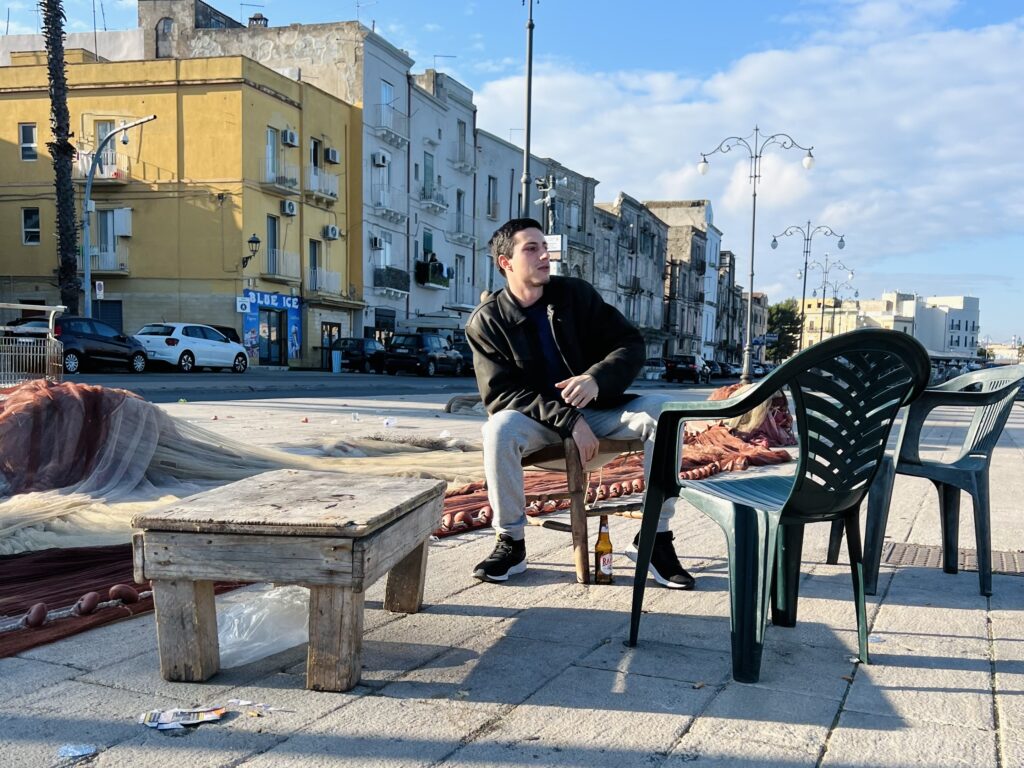
Within its winding alleyways new art galleries, wine bars and pop-up spaces are appearing alongside the street art and rusted street signs.
Culture is coming. A fuel that doesn’t pollute. And with it the slow gentrification that drags the old into the now.
Our Taranto hit list
Eat
Ristorante Al Canale | fish and seafood restaurant popular with the business community. Bright and airy, overlooking the channel between la Città Vecchia and downtown Taranto. A flawless lemon scented insalata di mare served hot in a lemon brodo impressed us.
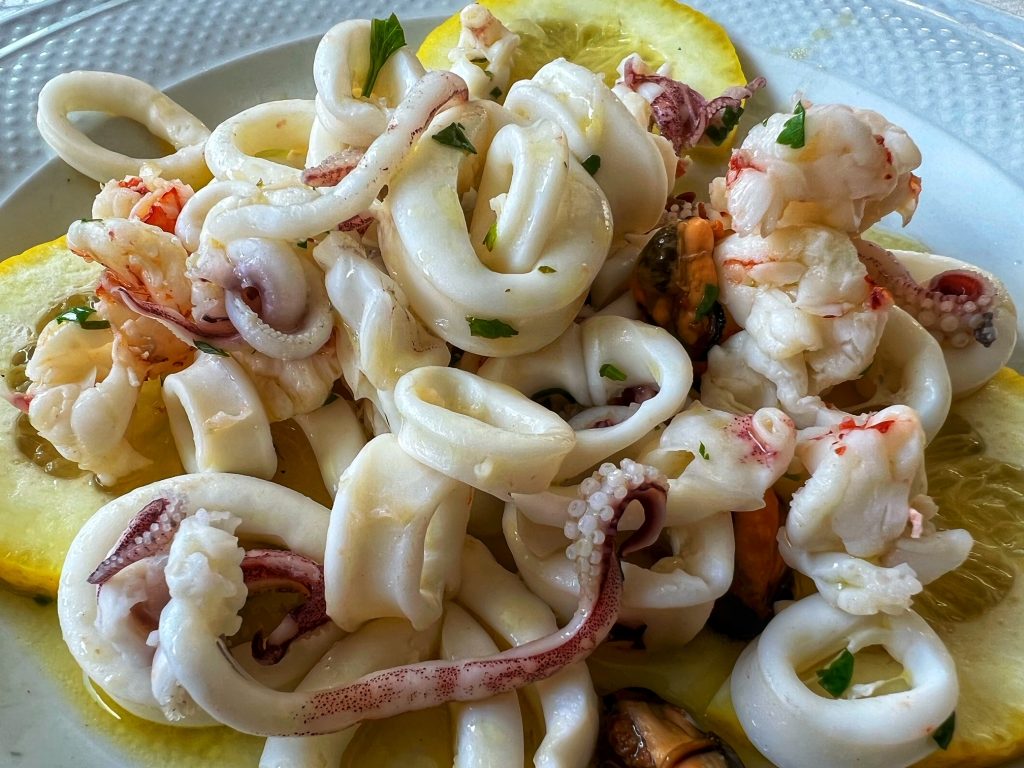
Ristò Fratelli Pesce | a busy fish and seafood restaurant at the northwestern end of the old town island, not too far from the Porta Napoli bridge. Seafood pasta dishes are highly recommended, as is booking. Via Porto, 18 (+39 339 818 2010).
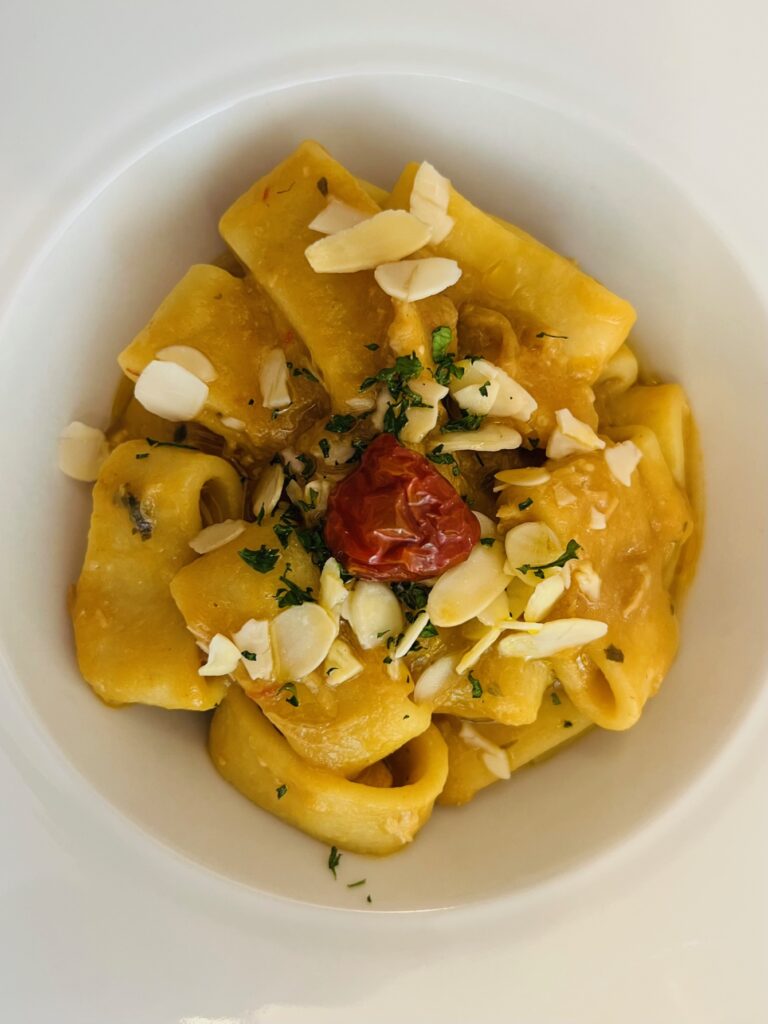
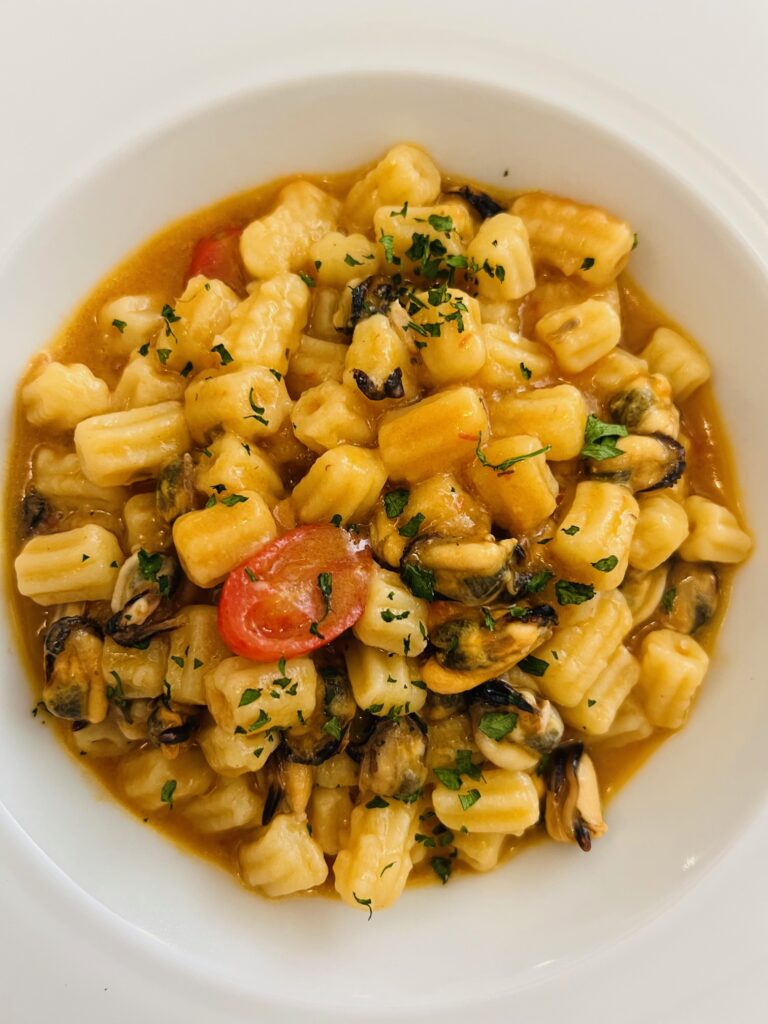
La ringhiera pizzeria Di Michele Ruggiero | opposite Ristò Fratelli Pesce. We walked in when we couldn’t get a table at Fratelli Pesce, and were pleased we did. Recommended for raw and cooked plates of seafood. Piazza Sant’Eligio, 12 (+39 320 710 6301).
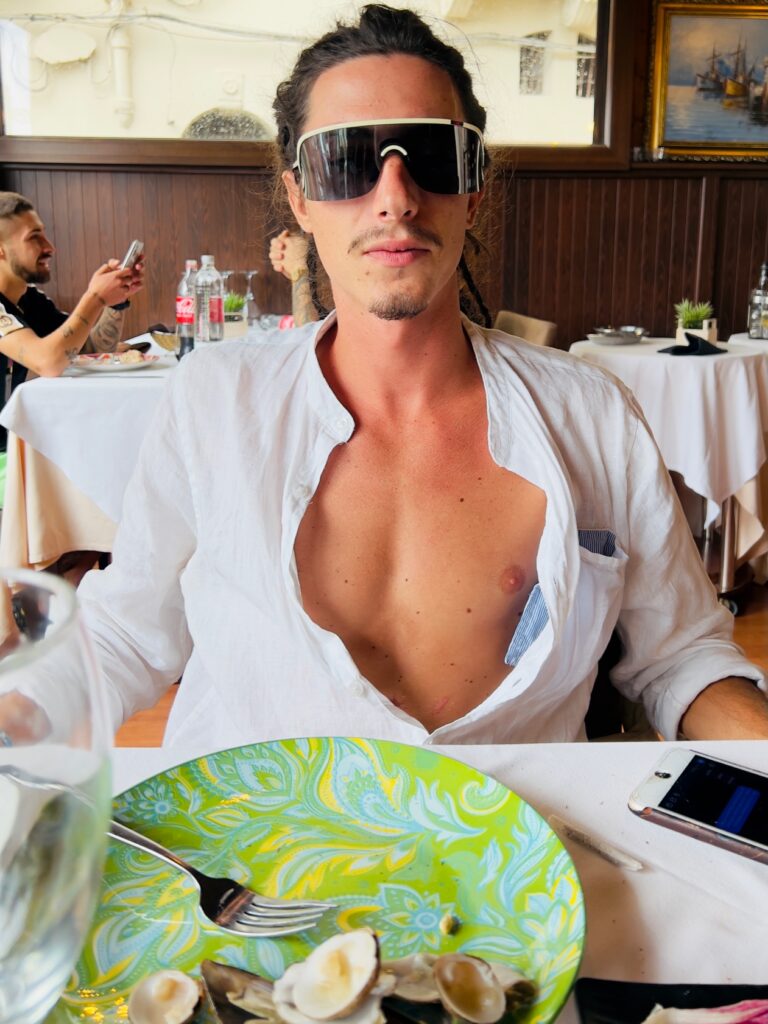
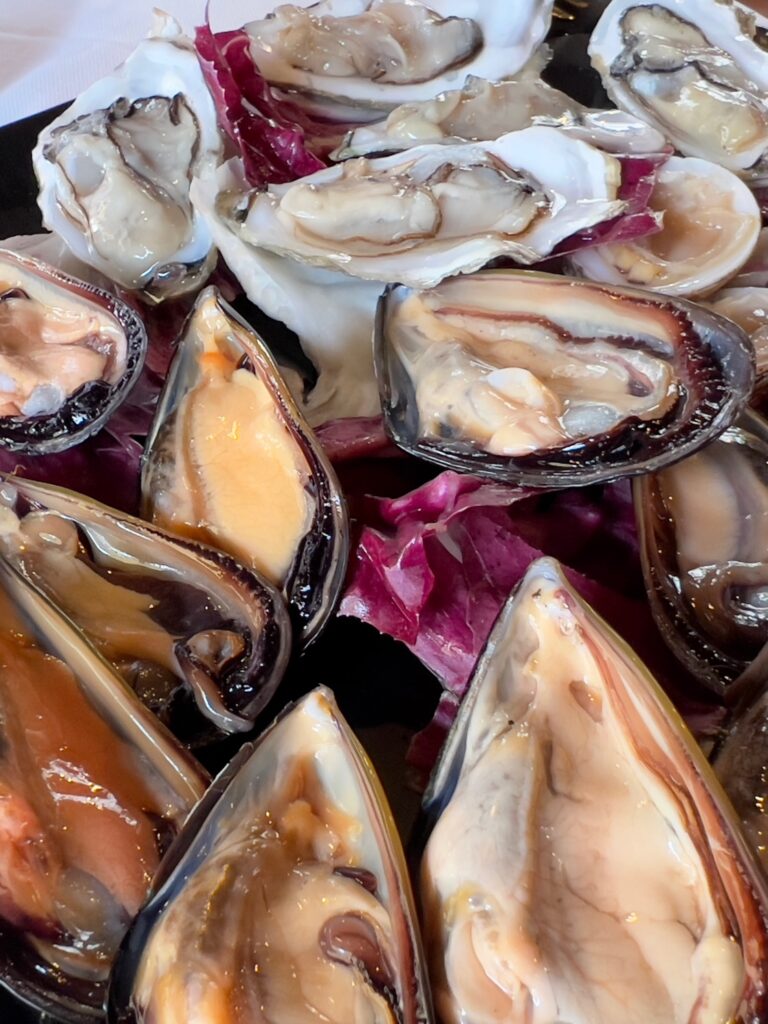
Gente di Mare Trattoria | Cucina di Pesce a Taranto – fish and seafood restaurant. What can we say. Excellent, and popular with locals. It was full for Sunday lunch, always a good sign. Via Garibaldi, 254. (They also have a restaurant at the other end of the borgo antico which we haven’t tried).
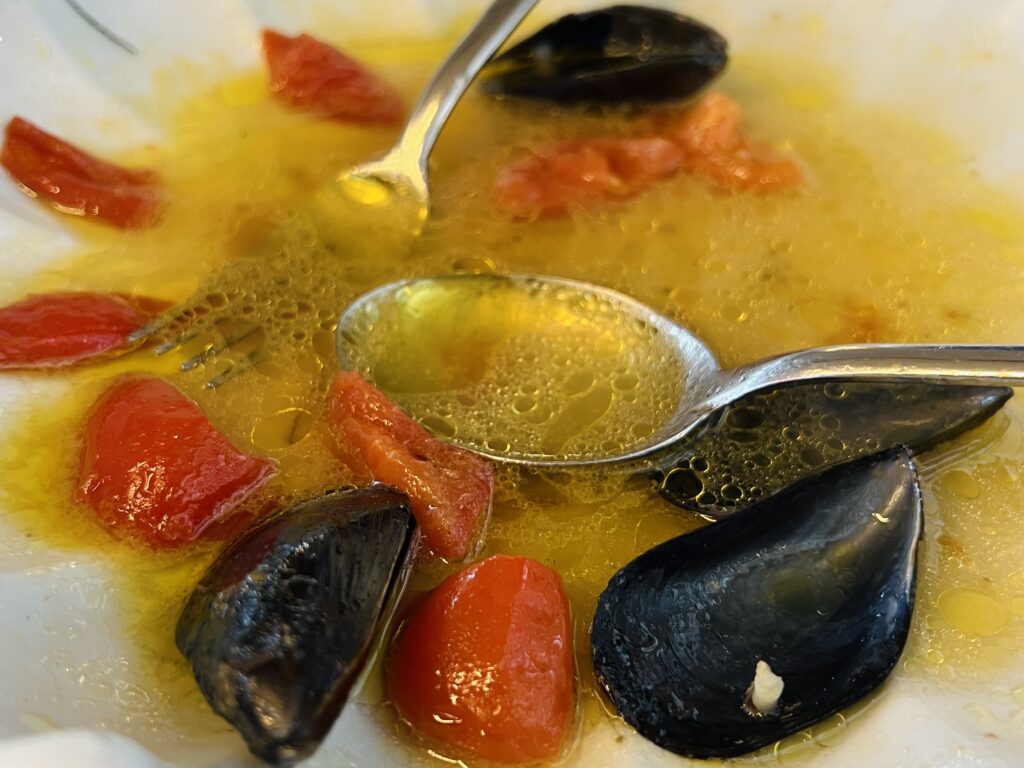
Fichi & Barbera Wine Bar | trendy wine bar down an alley, with an enclosed outside seating area (leading to a “hidden” courtyard with street art). Via Arco Madonna del Pozzo, 4.
See
MArTa – National Archaeological Museum of Taranto
A world class museum, considered one of the most important archaeological museums in Italy, particularly in the study of the ancient Magna Graecia (Southern Italy and Sicily colonised by Greeks) civilisation.
The museum houses a vast collection of ancient artifacts from the area, including items from the Paleolithic and Neolithic periods, as well as from the Bronze Age, the Iron Age, and the classical period.
One of the highlights is the collection of artifacts from the ancient city of Taras, which was founded in the 8th century BCE by Greek colonists and was one of the most important cities in ancient Magna Graecia. Visitors can see a variety of pottery, jewelry, and other objects from the city, including several bronze and marble statues and the famous “Taranto Bronzes,” a group of bronze objects that were discovered in the city in the early 20th century.
It is said to house the finest collection of Hellenic gold out side British Museum.
MArTA also contains a collection of Roman artifacts including sculptures, inscriptions, and architectural elements, as well as several mosaics. One of the most interesting pieces on display is the mosaic floor from the Roman Villa which is located in the ancient city of Taranto.
Overall, the National Archaeological Museum of Taranto provides a fascinating glimpse into the rich history of the region and the various cultures and civilizations that have inhabited it over the centuries. It is also an interesting cultural institution that tells the story of the ancient Greek colonization, the Messapic civilization and the Roman civilization in southern Italy .
A medieval fortress built in the 15th century by the Aragonese, a powerful maritime kingdom that controlled much of southern Italy and Sicily at the time.
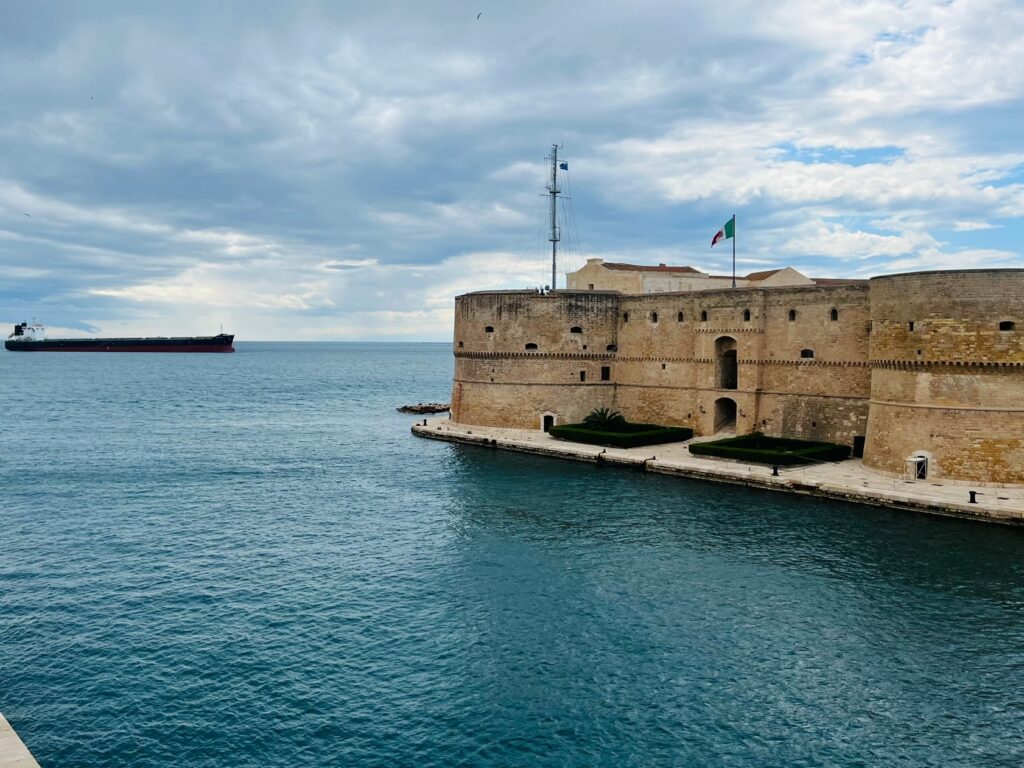
The fortress is made of a large, rectangular main tower and three smaller towers. The main tower, also known as the keep, is the tallest and most imposing part of the castle and offers a panoramic view of the city and the sea. The castle also has a large courtyard and several rooms, including a chapel and a prison.
The castle played an important role in the history of Taranto and the surrounding region, serving as a military stronghold, a royal residence, and a prison over the centuries. It was also an important symbol of the Aragonese’s power and control over the area.
The Castello Aragonese has undergone several renovations and restorations over the years, and it is now open to the public as a museum. Visitors can explore the castle’s various rooms and towers, and learn about its history and the role it played in the region.
Tours are led by the Italian Navy.
The Cathedral of Saint Cataldo is dedicated to Saint Cataldo, an Irish bishop who is said to have died in Taranto during the 7th century.
The cathedral was built in the 12th century, and it is a fine example of Romanesque architecture. The building is constructed of limestone and brick, and it features a simple, symmetrical design with three apses and a central nave. The exterior is characterized by its plain walls and small, round-arched windows.
One of the most striking features of the cathedral is its three red domes, which sit atop the apses. These domes are a distinctive feature of the building and are a symbol of the city of Taranto. Inside, the cathedral is relatively plain, with simple frescoes and decorations.
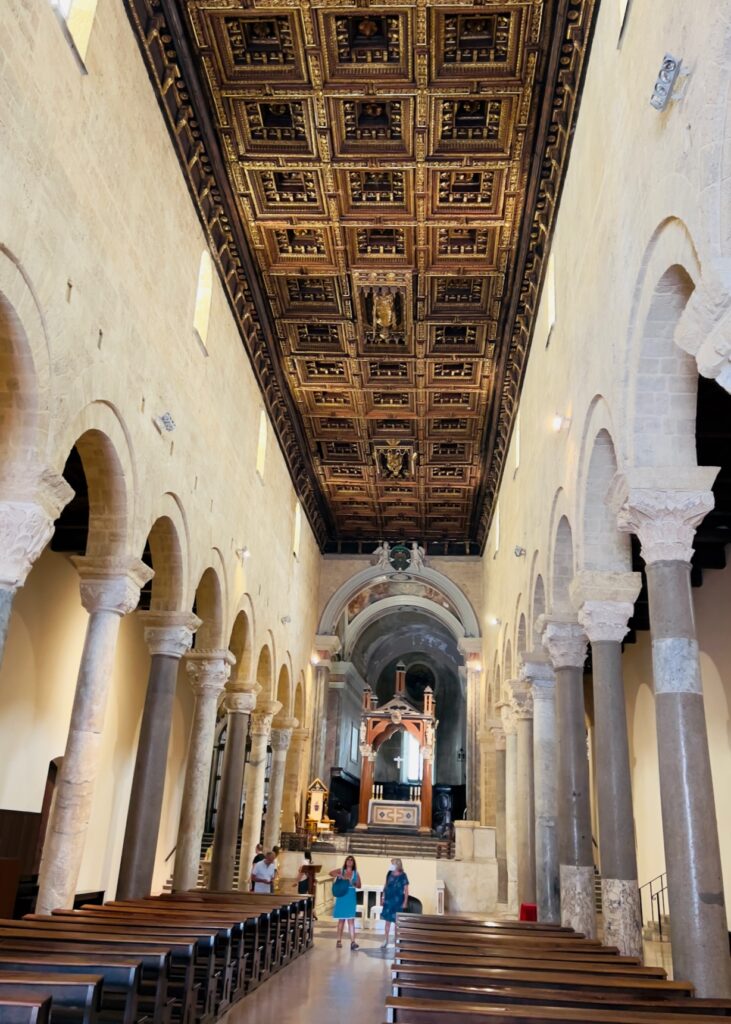
The cathedral’s history is quite eventful. It was badly damaged by an earthquake in the 14th century, and then it was rebuilt in the Baroque style in the 18th century. The three red domes were added then, which gave the Cathedral a completely different appearance.
In the 19th century it was abandoned and it underwent a restoration process in the 20th century. The restoration work has revealed many of the original 12th-century details, including the walls, floors and the apse mosaics.
The marble work in the third apse is unexpected, beautiful, and should not be missed. The Cathedral is open to the public free of charge.
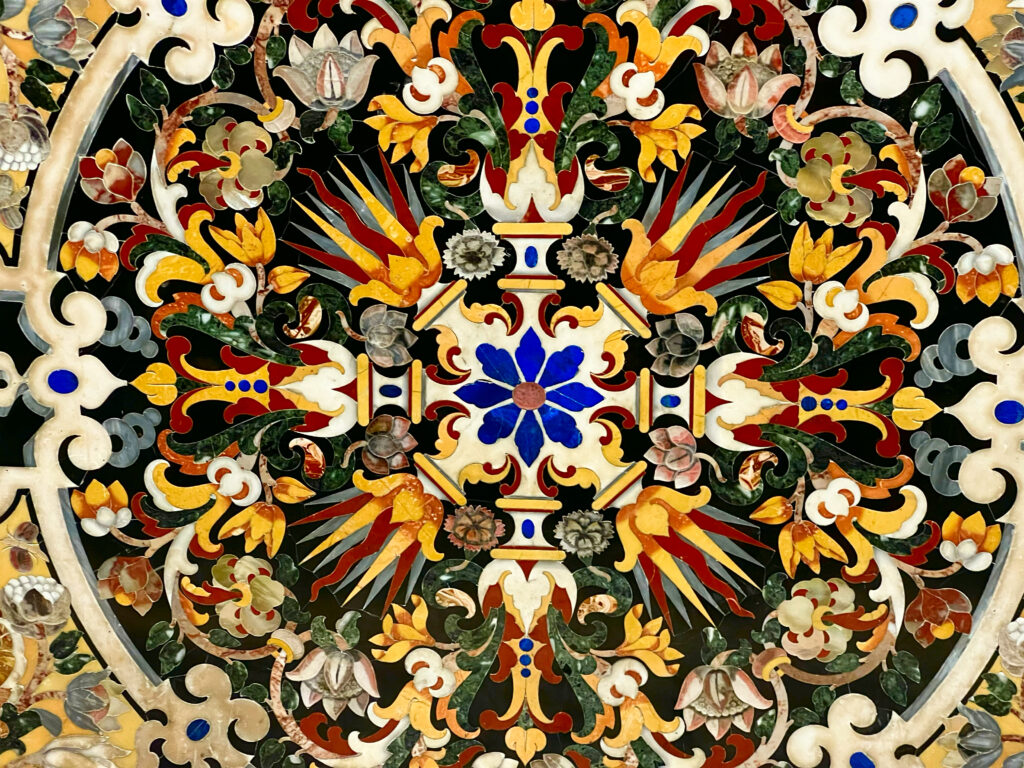
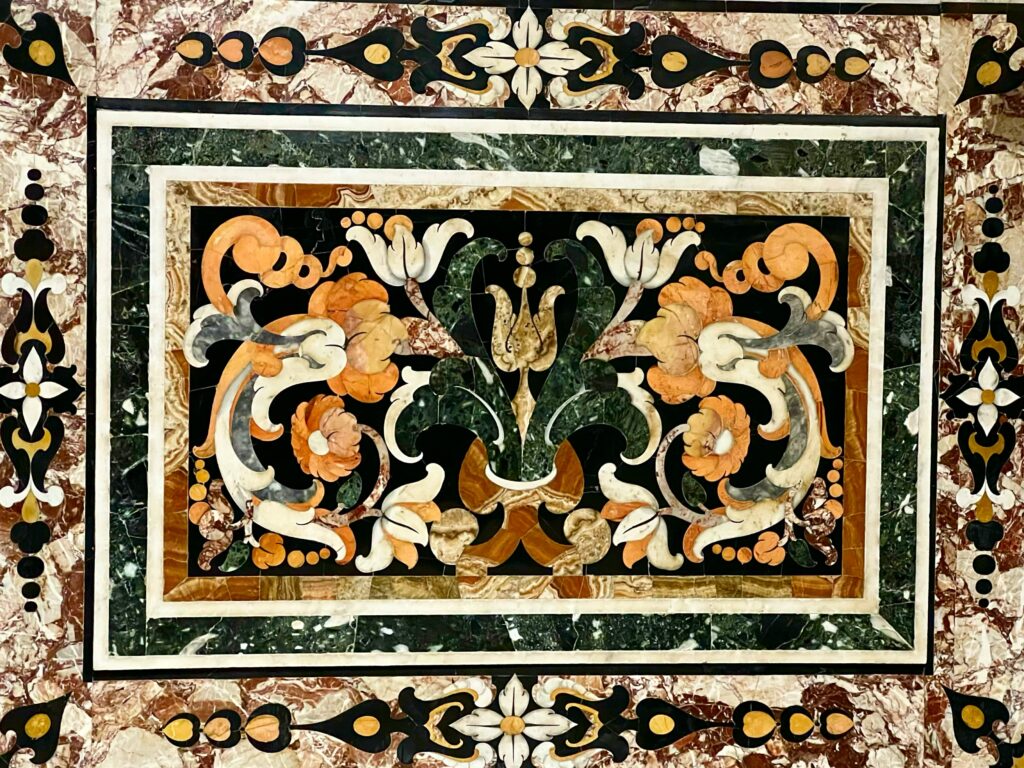
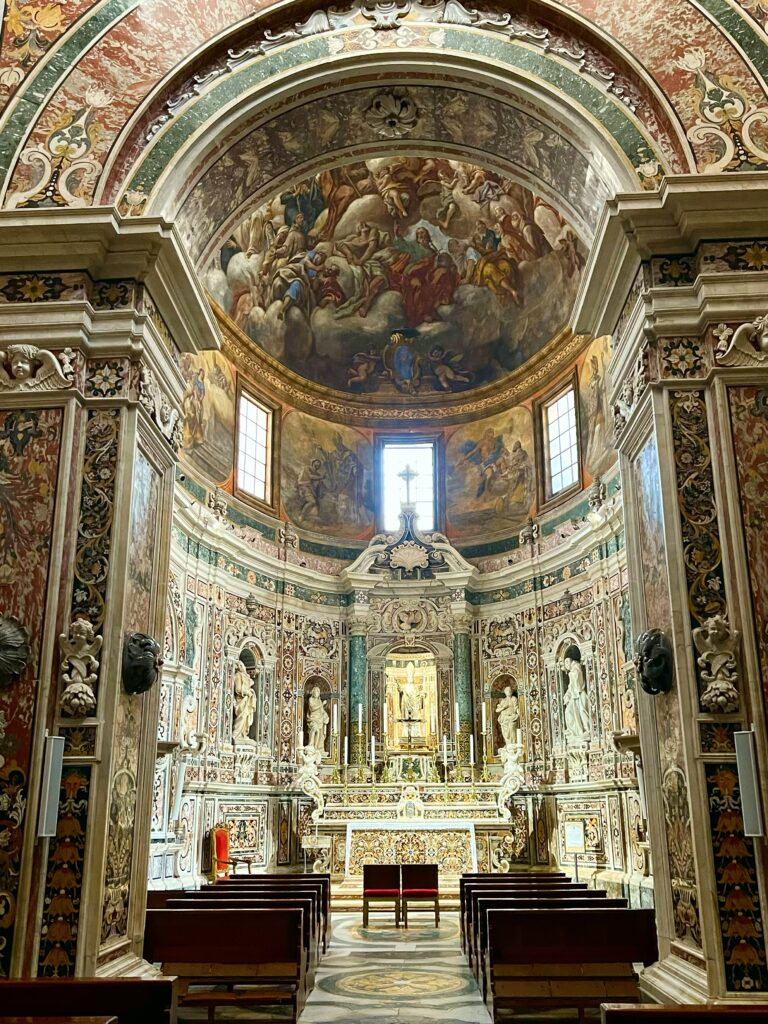
Do
Stroll down the Via Duomo. The Cattedrale San Cataldo is much grander than its surroundings, steeped in marble.
Walk along the Via Garibaldi and port from the swing bridge at the southern end of the old town to the Porta Napoli bridge.
Taranto’s swing bridge, officially known as the “Ponte Girevole” or “Rotating Bridge,” is a unique and iconic feature of the city.
The bridge was designed and constructed in 1907, by the engineer Alberto Paleari. The central section of the bridge can rotate 90 degrees to allow boats and ships to pass through the narrow strait. The rotation mechanism is operated by an electric motor, which was a technological innovation for the time of the construction. The bridge’s rotation can take about 8 minutes.
The bridge’s design is a combination of functional and aesthetic. The steel structure has a simple, industrial appearance, but it’s also decorated with elements of Art Nouveau and Liberty Style, which are characteristics of the period of the construction.
Although we focus on the old town, it is interesting to contrast it with “modern” downtown Taranto. A busy and restless city. If you have the time walk from the Giardini Piazza Garibaldi to Piazza Maria Immacolata.
Sense and sensitivity
Taranto’s old town is raw and gritty. As is obvious from the very dilapidated state of many of the buildings, this is an economically challenged part of Taranto. A slow gentrification of sorts is coming. The port is a busy working one, where fishing boats jostle for space. But we hear anecdotally that fish is not the only thing landed.
Be aware of your surroundings and of the circumstances of those who live there. We suggest parking in the car park at Corso Vittorio Emanuele II, in the downtown area of modern Taranto around the Giardini Piazza Garibaldi or nearby.
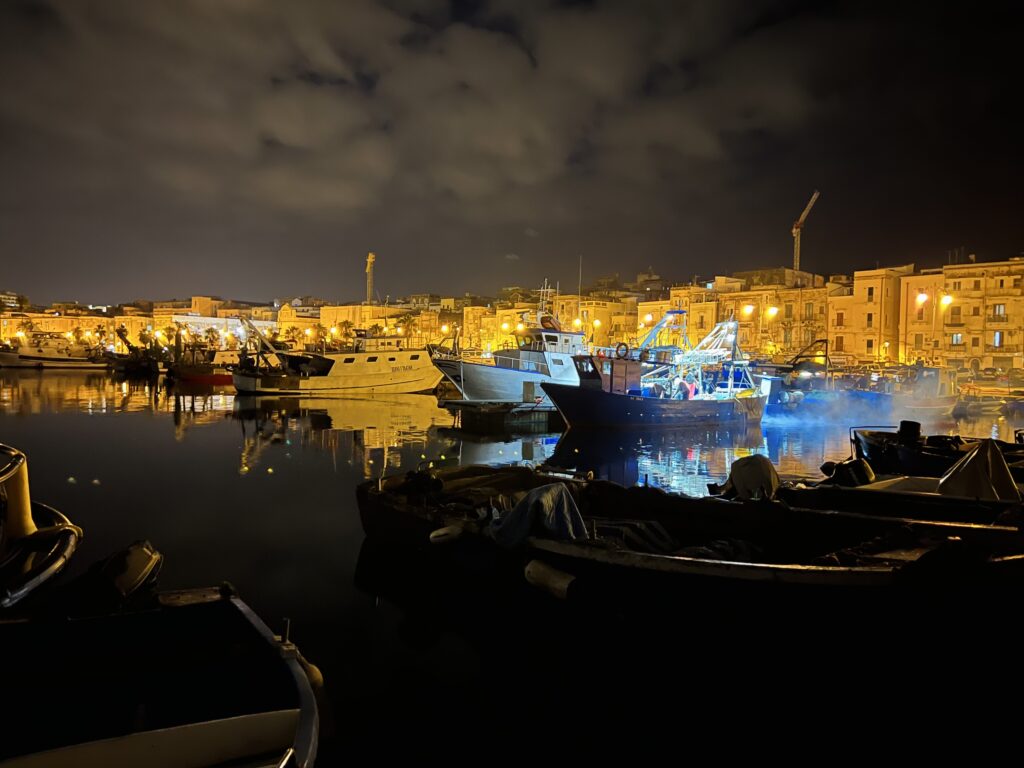
During the day if you are wondering around the maze of streets off the Via Duomo in the northern section between the cathedral and the Piazza Fontana we recommend keeping your phone in your pockets. At night we recommend sticking to the Via Duomo or the main roads that run around the old town (Via Garibaldi and Corso Vittorio Emanuele II).
However this advice is offered by way of an abundance of over caution for naive and unseasoned travellers. Please do not let it put you off visiting a wonderful and unique part of southern Italy.
Stay
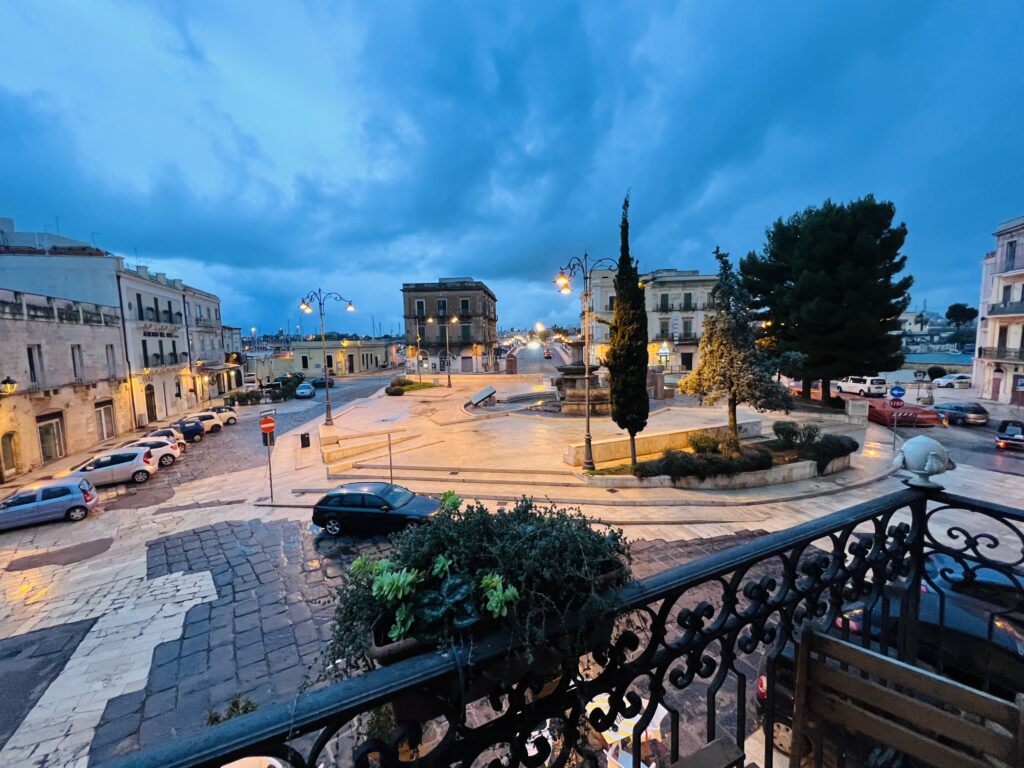
We stayed at the Hotel L’Arcangelo, ideally located on Piazza Fontana at the northern end of Taranto’s borgo antico. The hotel is stylish, clean and bright with spacious rooms. We had one of the friendliest welcomes we have experienced in Puglia, with cake and a glass of sweet wine, a symptom of a hotel bursting with pride. Pride in their city and in the service they provide to their guests.
Read about our stay at Taranto’s Hotel L’Arcangelo and why we liked it. As always we paid in full for our stay and received no payment or incentive for our review.
